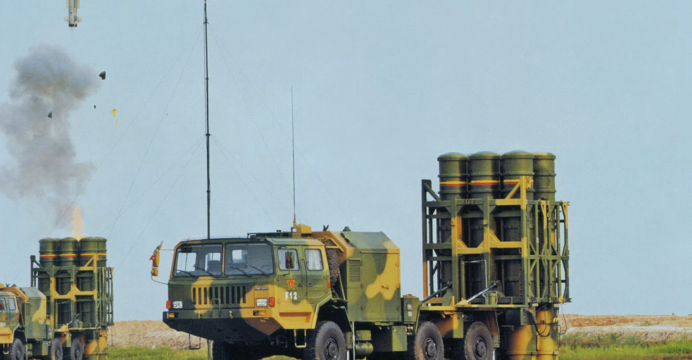PAKISTAN’S HQ-16 SURFACE-TO-AIR MISSILE PLANS
Daily News
Bilal Khan
Aug 17, 2016
In its
most recent annual publication, the Pakistan Ministry of Defence Production (MoDP) disclosed that the armed forces had procured six LY-80 (i.e. HQ-16) surface-to-air missile (SAM) systems from China for $373 million U.S. in fiscal year 2014-2015.
This acquisition appears to be a follow-on from the armed forces’ initial HQ-16 order, which took place in
2013-2014 (for three HQ-16 SAM systems for $226 million and eight IBIS-150 radars for $40 million).
Produced by China Aerospace Science and Technology Corp (CASC), the HQ-16 (export designation: LY-80) is a medium-range SAM system with a maximum intercept range of 40km (
Army Recognition).
Each HQ-16 system is reportedly comprised of a command and control vehicle, tracking and guidance radar vehicle, target search radar vehicle, and missile launchers.
The HQ-16 missile itself carries a 70kg warhead and is guided by a semi-active radar-homing (SARH) seeker (which will work in conjunction with the SAM system’s tracking and guidance radar). The missile is also used as a vertically-launched naval SAM in the People’s Liberation Army Navy (PLAN).
Comment and Analysis
It is not clear how many launchers are included within each HQ-16 system. Numerous web sources have suggested that each HQ-16 battery comprises of four launchers (as shown on an
illustration provided by Army Recognition), but no official information on this issue is readily available.
If the number of IBIS-150 radars (maximum range: 130km) is an indication of the number of batteries ordered by Pakistan, then a total of nine batteries (or systems) are in the procurement pipeline. Based on this information, the HQ-16 is on-track to forming the medium-range layer of Pakistan’s land-based integrated air defence system (IADS).
It is worth noting that the above mentioned information is based on the activities of fiscal year 2014-2015, and not the current year. This is an important consideration because
another air defence system deal was reportedly on the table in May 2016. Specifics were not given, but it would be safe to assume that this new contract would involve the HQ-16 and/or short-range HQ-7 (in use by the Pakistan Army), though one could speculate that this new deal is in reference to the HQ-9 long-range SAM system.
PAKISTAN’S HQ-16 SURFACE-TO-AIR MISSILE PLANS | Quwa









